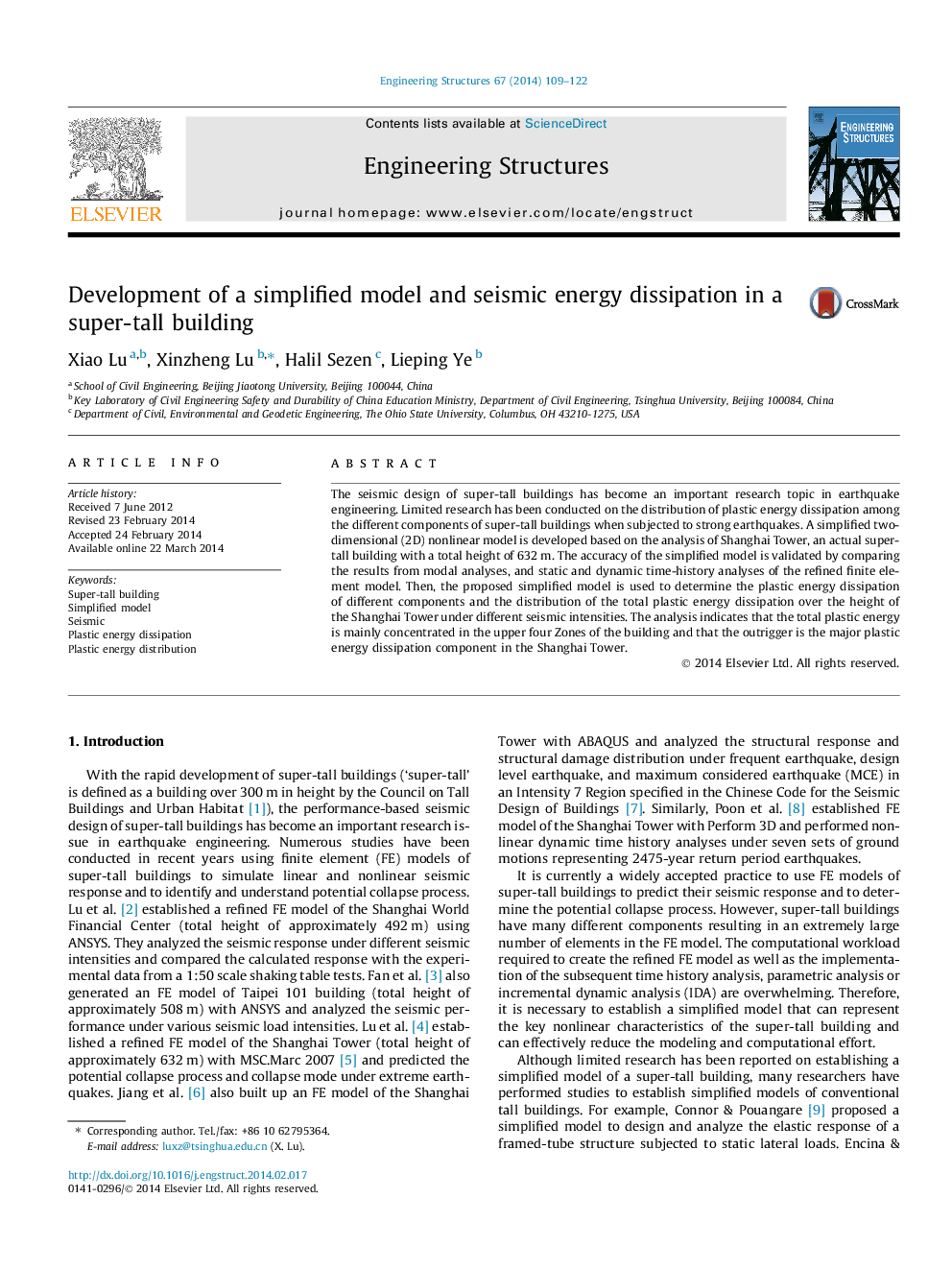| Article ID | Journal | Published Year | Pages | File Type |
|---|---|---|---|---|
| 266815 | Engineering Structures | 2014 | 14 Pages |
•A simplified nonlinear model is developed for the super-tall Shanghai Tower (632 m).•The simplified model agrees well with the refined FE model but much smaller size.•The plastic energy dissipation is concentrated in the upper regions of the Shanghai Tower.•The outrigger is the major plastic energy dissipation component in the Shanghai Tower.
The seismic design of super-tall buildings has become an important research topic in earthquake engineering. Limited research has been conducted on the distribution of plastic energy dissipation among the different components of super-tall buildings when subjected to strong earthquakes. A simplified two-dimensional (2D) nonlinear model is developed based on the analysis of Shanghai Tower, an actual super-tall building with a total height of 632 m. The accuracy of the simplified model is validated by comparing the results from modal analyses, and static and dynamic time-history analyses of the refined finite element model. Then, the proposed simplified model is used to determine the plastic energy dissipation of different components and the distribution of the total plastic energy dissipation over the height of the Shanghai Tower under different seismic intensities. The analysis indicates that the total plastic energy is mainly concentrated in the upper four Zones of the building and that the outrigger is the major plastic energy dissipation component in the Shanghai Tower.
